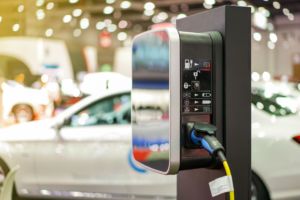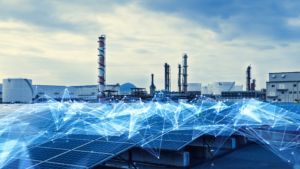Solar energy is still a relatively new technology from an adoption standpoint, and recent years have shown that there is substantial opportunity to integrate digital solutions. Many of these solutions can significantly increase efficiency, improve safety, and create new possibilities in the industry.
Ongoing Solar Tech Advancements
Solar Battery Innovations

With storage prices dropping faster than many have expected due to the growing EV market, solar batteries have become an economical solution for many commercial customers. With every improvement made in this space, such as capacity, depth of discharge, or battery life, prices continue to decrease, making solar microgrids and community solar projects far more comfortable to implement.
Improvements in Panel Efficiency
Each year, the solar industry continues to strive for improved solar cell efficiency, as competition stiffens between various panel manufacturers . While traditional silicon cell technology is still improving, the even greater potential lies in Perovskite solar cells, which many researchers believe will be 20+ percent more efficient while also being one of the lower-cost panels.
While these two areas of development have the potential to be the largest factors in price reduction in the coming years, digital solutions can be instrumental in improving both panel and battery tech.
String Inverters, Smart Management Systems and Remote Asset Monitoring
There has been a significant shift from traditional central inverters to more efficient string inverters over the last several years, as these string inverters allow for higher yield, lower cost, and improved reliability. As string inverters have become more sophisticated, companies such as Huawei have been able to develop accompanying software which allows for remote asset monitoring.
These smart-systems can monitor problems within the panels, track energy generation and environmental changes, and report any issues to an operations center. If, say, a string of panels is not generating as much as usual, a plant operator can easily see which panels and send maintenance to the correct area immediately.
Remote monitoring systems can also greatly increase system safety by tracking critical component temperature changes as well as voltages.
Real-time Data
 While smart systems are now fairly standard, most do not operate in real-time as far as their diagnostics. One of the next big steps for the solar industry is for these systems to not only provide live performance assessments but also link with an end-to-end digital platform.
While smart systems are now fairly standard, most do not operate in real-time as far as their diagnostics. One of the next big steps for the solar industry is for these systems to not only provide live performance assessments but also link with an end-to-end digital platform.
These solutions will likely never be cost-effective to retro-fit onto older systems closer to their end of life. We will, however, likely see new systems fitted with remote monitoring and digital data management going forward.

